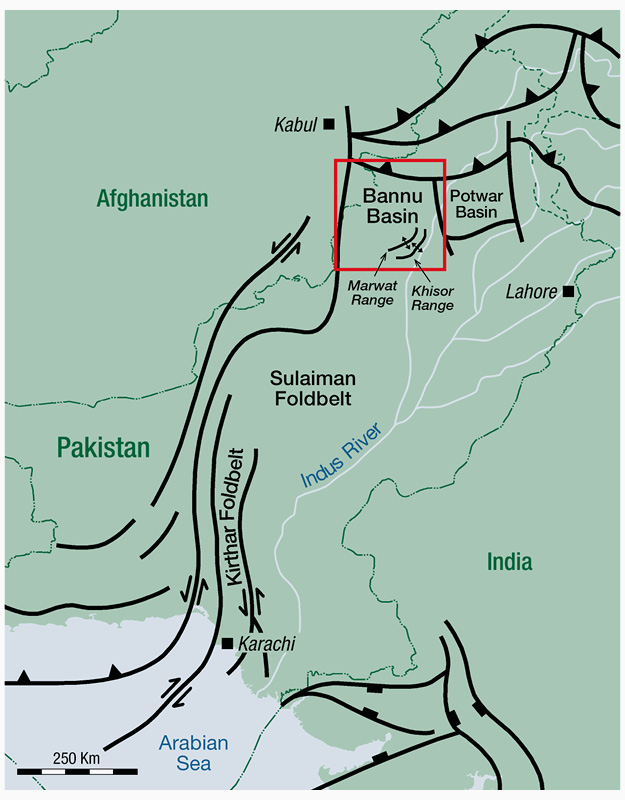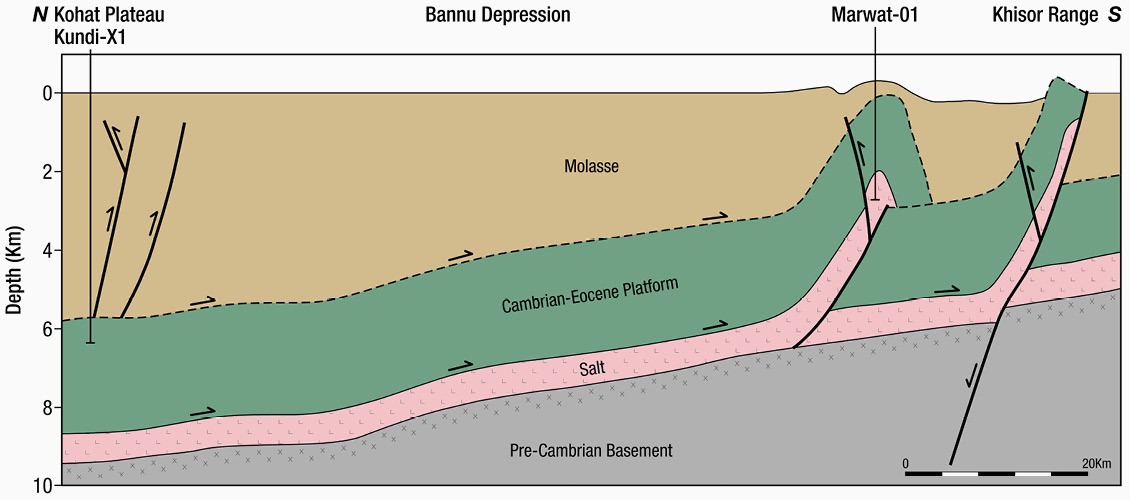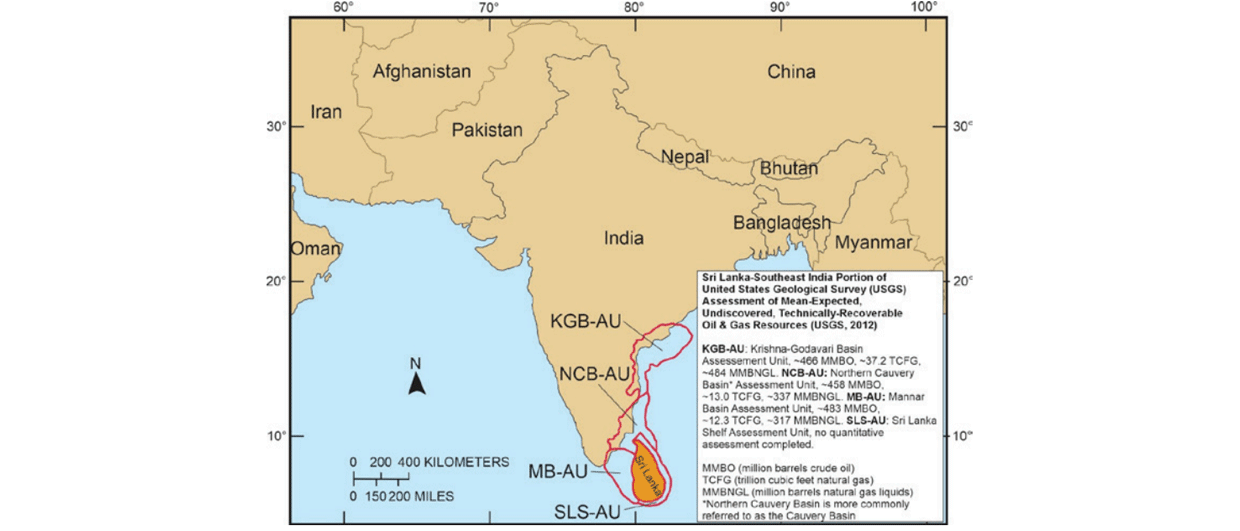Pakistan is an important gas-producing country with growing demand for energy. Like other mature petroleum provinces with strong state influence and good industry management by the national regulator, drilling and development activity levels have remained relatively strong since the last oil crash and through the pandemic. According to the Energy Information Administration (EIA) the country has been producing a steady 1.3 Tcf gas per year for the last few years, and consuming 1.6 Tcf a year, increasing at about 100 Bcf a year (no data is available since 2018).
 Figure 1: Location map, Bannu Basin. © NVentures.Oil production is a modest 92 mbopd, with consumption running to 625 mbopd (EIA). Whilst foreign investment in the upstream sector remains low, in line with global exploration sentiment, domestic exploration focus is moving to early–mature and new basins in the west and north of the country, away from the established producing basins of the Sindh and Punjab regions.
Figure 1: Location map, Bannu Basin. © NVentures.Oil production is a modest 92 mbopd, with consumption running to 625 mbopd (EIA). Whilst foreign investment in the upstream sector remains low, in line with global exploration sentiment, domestic exploration focus is moving to early–mature and new basins in the west and north of the country, away from the established producing basins of the Sindh and Punjab regions.
The Bannu Trough Basin of the Khyber Pakhtunkhwa (KPK) province is one such basin at the vanguard of new exploration eff orts by the likes of Mari Petroleum, OGDCL, Zaver Petroleum and Pakistan Petroleum Limited (PPL). Although only 150 km west of Islamabad, the acreage being explored around Wali, Bannu West and Zindan is close to the ‘red zone’ of security issues with Afghanistan.
In July 2021 OGDCL announced a gas discovery at Wali-1 on the Wali Block. This is the first good test of gas and condensate in the Bannu Basin, with 11.8 MMcfgd and 945 bcpd from the Late Cretaceous Kawagarh Formation at a TD of 4,727m. Further tests of the Hangu and Lockhart Formations are expected soon. The basin is set within the Trans-Indus Salt Range of the Sulaiman fold and thrust belt. The Bannu and nearby Kohat Potwar Basins are foreland depressions hosting Proterozoic to Mesozoic and Paleocene petroleum systems with mild structuration from the Marwat and Khisor ranges to the east (Figure 1).
These mountainous thrust belts, along with the Surghar Range of the linked Kohat Potwar Basin to the north, are created by major thrust events over the Neoproterozoic salt detachment (Figure 2).
Nearby on the Bannu West Block, Mari Petroleum (with OGDCL and Zaver) acquired a difficult 2D and 3D seismic campaign in 2020, and subsequently spud the Bannu West-1 wildcat about 50 km north of Wali-1 in June 2021. This is a HPHT well with stacked targets in the Paleocene, Cretaceous and Jurassic, with a prognosed TD of 5,970m. Zaver Petroleum (ZPCL, a division of the Hashoo group), is a relatively new private Pakistan E&P firm and has partnered with OGDCL and Mari Petroleum to open up the KPK province. OGDCL and ZPCL discovered oil and gas in the Shakardara Block recently. Mari Petroleum was awarded the Wali West Block in 2018, and will watch with interest further testing results at Wali-1 as it drills ahead at Bannu West-1. To the north-east, MOL are drilling a wildcat Surghar X-1 in the Kohat Potwar Basin adjacent to Bannu, with similar geological style.
The major players in Pakistan such as OGDCL, Mari, PPL, PEL etc. continue to push the exploration envelope into early-mature and new frontier provinces, with high-risk profiles to be managed above and below ground, but geological success appears to be following these pioneering steps.






